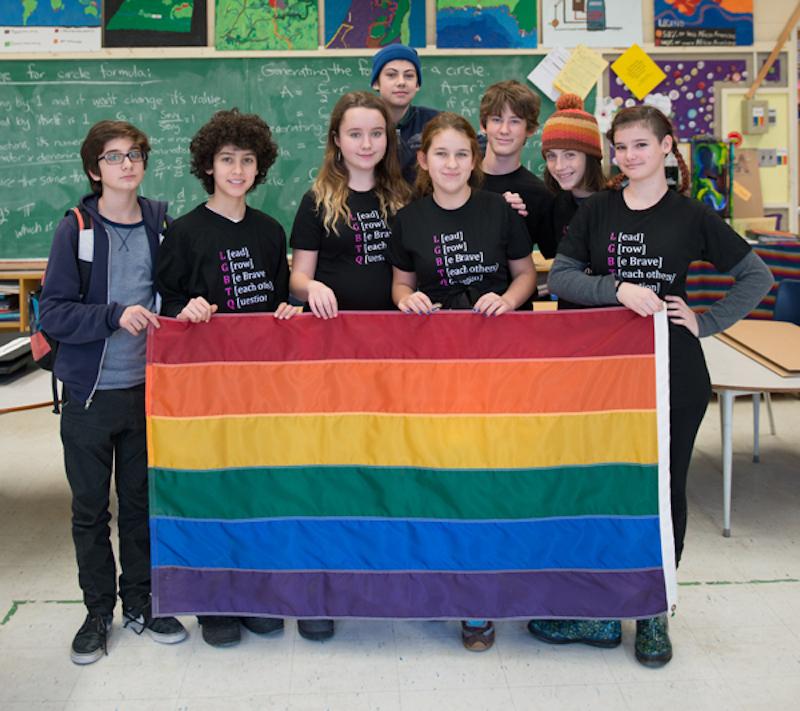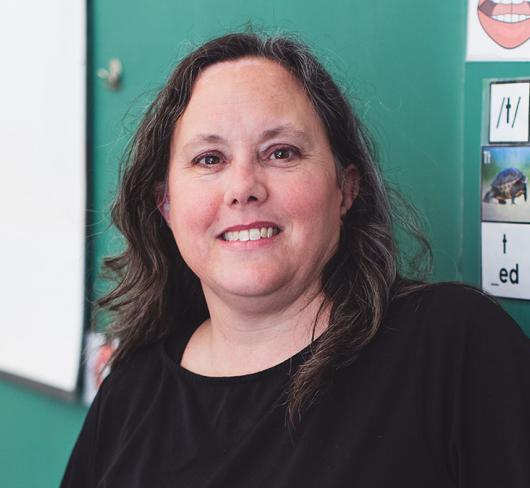
All-Gender Cabins and Their Place in Trans-Inclusive Spaces
In June of 2013, students at City View Alternative School in Toronto’s west end cut the ceremonial ribbon across the door of a multi-stall, all-gender washroom. Simultaneously, they began a cultural mind shift in the way our school community could dismantle systemic transphobia.
Bill 33, also known as Toby’s Act (Right to be Free from Discrimination and Harassment Because of Gender Identity or Gender Expression), passed in 2012, amending the Ontario Human Rights Code. It made schools legally responsible for eliminating barriers to inclusion based on gender identity and gender expression. The Act set the stage for challenging one of the most significant manifestations of exclusion for gender nonconforming, gender fluid and trans students, the set-up of washrooms based on a binary system of “boys” and “girls.”
Some schools have responded with the politically expedient and wildly popular single-stall option. However, students are basically asked to out themselves as having a non-conforming gender when they choose this option and, in the worst case scenario, it requires a student to ask for a key each time they need to use this washroom. Sometimes, young people are asked to justify their need to use the accommodated space. At the least damaging end of this spectrum, the door is always unlocked and can be used by any member of the school community.
Other schools have opted to create a multi-stall option. With this approach, no student needs to ‘out’ themselves, and more significantly, the entire school community is collectively responsible for thinking about the idea that bodies and identities are far more diverse than the world currently cares to admit. Using the washroom is a political act no matter where you place yourself on the continuum.
Based on the success of this space in our school, (see: etfovoice.ca/article/its-thesmall- things-that-matter-most/) students proposed the next leap in our school’s evolution, all-gender cabins.
Digging Deeper
We organize two school trips each year that have an overnight component. The first is our fall camping trip, where all the students sleep in tents for two nights. The second is our year-end trip to YMCA Camp Pine Crest. There are significantly more mosquitos in June, but we have the good fortune of being able to sleep in cabins in the woods. Up until this past year, we had always created four girls’ cabins and four boys’ cabins.
One day late in the fall, a member of our Queer Straight Alliance approached me with insider knowledge about the fall camping trip. She was aware that a fellow student had been uncomfortable sleeping in a tent that did not match their gender identity, and had already decided not to go on our yearend trip. We began by writing a letter to the principal:
“…We understand that there could be difficulties solving this but in our QSA we have been talking about the possibility of providing one or more all-gender cabins in addition to the gender-based cabins. Much like our all-gender washroom, we propose that the community take responsibility collectively to create a safe space, and allies could opt into the allgender cabin… ”
A quick and resounding ‘yes’ from the principal put our students into high gear. Classroom conversations began to generate questions and propose solutions. How many all-gender cabins would there be? How would students change into and out of swimsuits and pajamas? What if a student started in an all-gender cabin and then wanted to switch into a gendered cabin? How would the parent body be informed and consulted?
What quickly became clear was that students understood the issue. Clarice, in grade 8, explained: “The point of all-gender cabins is that it’s for all genders; male, female, trans, and gender fl uid students. When you participate in the all-gender cabin there is support for people who don’t fi t into the binary.” And Patia would later write, “As a cisgender girl, I had two reasons for joining an all-gender cabin. My fi rst reason was that I wanted to be in a cabin with all of my friends and my second was to show support for those who identify as trans or simply do not identify with the gender that matches their body.”
Just as offering an option for gender nonconforming people is important, also extending a choice for the trans students and cisgender students who feel safest in a boys’ or girls’ cabin satisfi es the expectations of the Ontario Human Rights Code. At every turn, we found humility in our ignorance and opportunity in our discussions.
Students were very clear about their concerns. Jordan wanted to know that there was a private space in each cabin to use as a changing area. This became a design feature that we would integrate into every cabin, using a privacy curtain or bunk bed mattress to cordon off a pre-existing nook. In all cabins, students wanted to be able to identify at least one good friend who would be with them, a logistical challenge worthy of a chess master, but possible. And students anticipated that parents and guardians would be concerned about the possibility of sexual activity, yet could sensitively articulate both the policies in place prohibiting the behavior and the underlying heteronormativity of the concern.
the concern. Finally, as if all of the tumblers in a lock had clicked into place, a hand in the back of the classroom slowly went up, and a student in grade eight asked, “What happens if a student wants to sleep in an all-gender cabin, but that person’s guardian says no?” The question of whose rights take precedence was now out of the box. Just in time for the parent consultation meeting.
Bringing the Community on Board
With 50 percent of the student body indicating a desire to take part in an all-gender cabin, the need for a parent consultation meeting was a forgone conclusion. Present were some of the staff, including the principal, our superintendent and a representative from the Gender-Based Violence Prevention Office of the TDSB. Here, adults had to grapple with a new legal reality; this meeting was not a request for permission but rather an opportunity to give input into how to make all-gender cabins a reality.
There were questions about whether wearing underwear around the cabin was acceptable (I couldn’t help but wonder if we would have to cancel the swimming activities if the answer turned out to be ‘no’) and the logistics of eight cabin mates having enough time to change and get to a program on time. One parent mused aloud that with all of the attention given to the high expectations outlined for the all-gender cabins, they were likely going to be more mundane than the gendered cabins.
And in the End
As any teacher knows, running an overnight trip is fraught with a million details, and usually some challenges. In our case, and by all student accounts, the all-gender cabins were a non-issue. Jordan would later write, “To me personally, being in an all-gender cabin never really seemed like a big deal, but that could have been because we got to choose at least one person to bunk with, and I trusted most of my classmates.” What strikes me about her thoughts is the mention of trust, because it, along with human rights activism, is at the core of the work we do at City View.
Rostine wrote that he “felt privileged” to be a part of the process, and Guin was sure that some friendships were stronger because of the cabins. At the end of the day and in retrospect, Patia would say, “Difference can be scary at first, because you don’t know how to deal with or understand it. I admit, I was nervous. But if we didn’t have difference in this world, we would all be pretty darn boring. I think change is not only inevitable, but beautiful.”
And so it was.
David Stocker is a member of the Elementary Teachers of Toronto.

